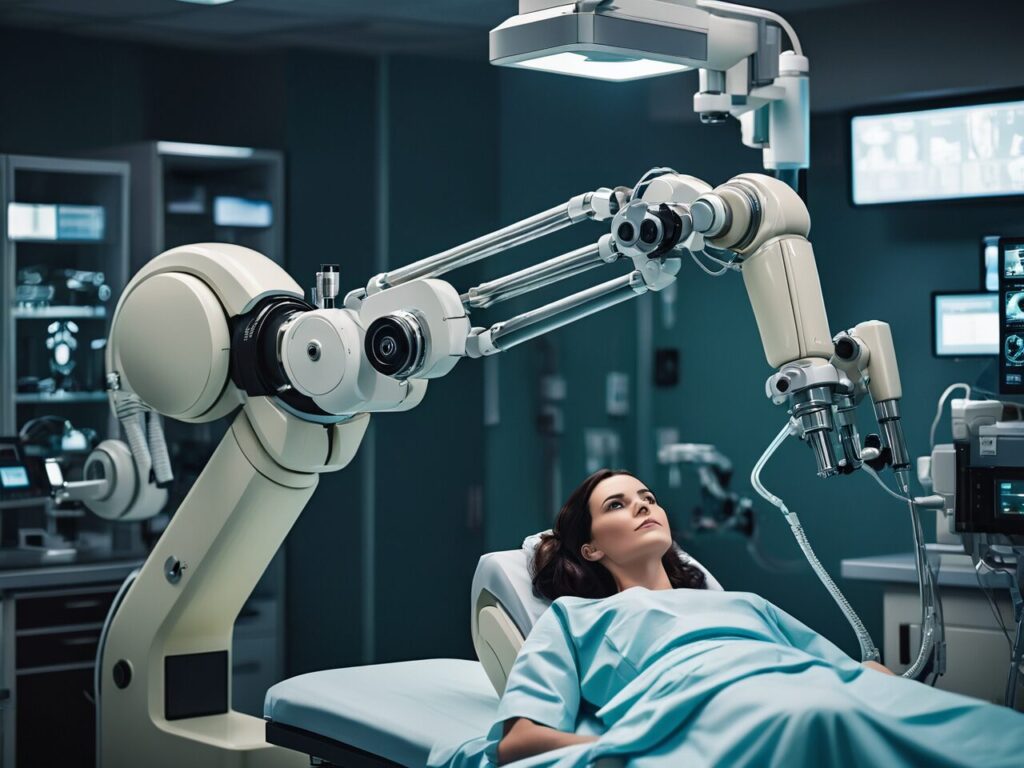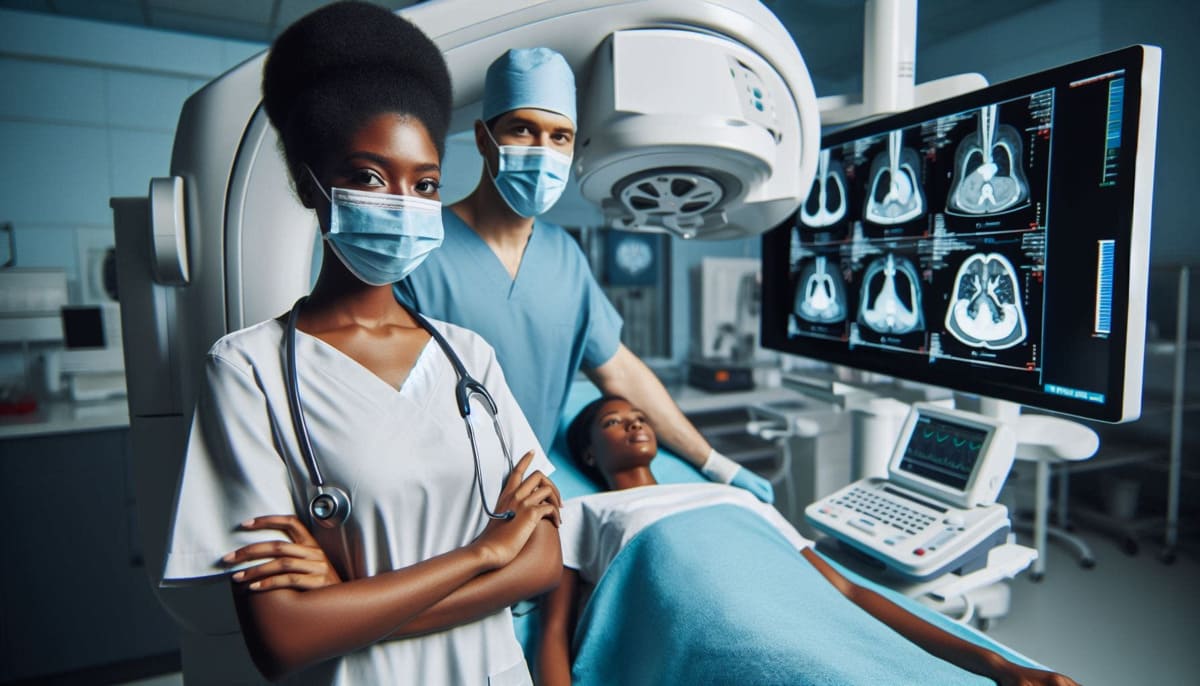For those embarking on a new diagnostic center venture or overseeing an existing one, a pivotal decision looms: Choosing between C-Arm vs Cath Lab. This choice is fraught with complexity, given the substantial investment required for both options and the uncertainty surrounding which equipment will be in higher demand among physicians. C-Arms and Cath Labs boast unique attributes that set them apart, intensifying the challenge of this decision-making process.
In this blog, we delve into the distinctions between a cath lab and a C-arm, providing insight to help you navigate this crucial decision based on your precise requirements. Both devices are distinct, each possessing its primary features. Though utilized in radiology and cardiology, they serve disparate purposes even within the same field.
Why Choose a C-Arm?

User-Friendly Interface
While a cath lab may appear sophisticated and alluring, it might not align with your specific specialty’s requirements. If your primary focus revolves around pain management procedures, opting for simplicity and ease of use can streamline your workflow. In many cases, the features offered by a cath lab may not be fully utilized, making a C-arm the more practical choice. With its straightforward operation, a C-arm simplifies procedures, saving both time and effort.
Cost-Effectiveness
As previously mentioned, the price tag attached to a C-arm is significantly lower compared to that of a cath lab. For tasks involving pain management, cardiac and angiography studies, orthopedic surgery, and other minor procedures, a mobile C-arm presents a cost-effective solution. Moreover, the ongoing expenses associated with a C-arm are notably lower than those of a cath lab. However, the ultimate decision should be guided by the specific needs of your practice.
Logistical Considerations
When it comes to installation, the simplicity of setting up a C-arm is unparalleled. With minimal effort, you can roll the C-arm into the procedure room and connect it to power – a hassle-free process. Conversely, installing a cath lab requires meticulous planning and coordination. From detailed specification drawings to managing lead shielding, electrical work, HVAC systems, and IT setups, it demands a significant investment of time and resources. Therefore, if your specialty necessitates the capabilities of a cath lab, ensure that your budget accommodates the additional logistical costs.
Moreover, the setup time for a C-arm is remarkably short, typically taking less than 5 hours.
Space Efficiency
In the realm of healthcare facilities, optimizing every square foot of space is essential. If you’re grappling with equipment decisions, the compact footprint of a C-arm could sway your choice in its favor. In scenarios where space is limited, the smaller size of a C-arm offers an efficient and space-saving solution, ensuring that your facility remains functional and well-utilized.
Why Choose a Cath Lab?

Enhanced Power
A cath lab boasts significantly greater power capabilities compared to a C-arm, enabling it to tackle larger and more demanding tasks with ease. With power generators capable of producing up to 85k to 100 kW of power, cath labs excel in handling heavier case loads, conducting longer studies, and accommodating larger patients. In contrast, the power output of a C-arm generator typically ranges from 7 kW to 25 kW, making it less suitable for extensive procedures.
Advanced Features
Distinguished by its comprehensive integration, a cath lab offers an extensive array of features designed to streamline and enhance surgical imaging procedures. From multiple table-side controls to a motorized table and diverse post-processing workstation options, each component is meticulously engineered to optimize positioning and visibility during surgical interventions. These advanced features facilitate smoother and more efficient surgical workflows, empowering healthcare professionals to deliver superior patient care.
Unparalleled Flexibility
In a cath lab, simplicity reigns supreme, fostering a seamless and intuitive environment for medical procedures. The presence of overhead monitors and table controls simplifies equipment adjustment, ensuring that tasks can be carried out with ease and efficiency. Unlike the occasional need to relocate the entire apparatus in a C-arm setup, the cath lab offers a fluid and effortless experience – akin to a graceful dance – where adjustments can be made swiftly and smoothly. This inherent flexibility makes healthcare procedures more manageable and less cumbersome, contributing to a more seamless patient care experience.
C-ARM Features
- X-ray Generator:
- The power behind the scenes, creating X-rays for imaging.
- Tube Type and Collimator System:
- The heart of the system, determining the X-ray beam’s characteristics and focus.
- C-Arm Dimension:
- The physical size and shape of the C-Arm, crucial for fitting into various medical spaces.
- Maneuverability and Range of Movements:
- How easily the equipment can be moved and adjusted during procedures.
- Field of View (FOV):
- The area visible through the X-ray imaging, influencing the extent of details captured.
- Compactness:
- The overall size and design to ensure efficient use of space in medical facilities.
- Image Processing, Storage, and Transfer Capability:
- The system’s ability to handle, store, and transfer X-ray images seamlessly.
- Radiation Dosage:
- Ensuring the right balance between obtaining quality images and minimizing radiation exposure.
- Image Detection and Capture Technology:
- The technology used to capture and create diagnostic images.
Cath Lab Features
- Right Heart Catheterization:
- Examining the heart’s right side to assess its function and blood flow.
- Coronary Angiogram:
- Visualizing blood vessels around the heart to detect any blockages or issues.
- Balloon Angioplasty:
- A procedure to widen narrowed or blocked arteries using a balloon.
- Coronary Catheterization:
- Investigating the coronary arteries for potential blockages or abnormalities.
- Angiography Drape:
- Providing a sterile barrier during angiography procedures for infection prevention.
- Cardiac Ablation:
- Correcting heart rhythm issues by destroying abnormal tissue.
- Cardiac Output:
- Measuring the volume of blood the heart pumps in a specific time.
- Defibrillator:
- A life-saving device that delivers an electric shock to restore normal heart rhythm.
- Hemodynamic Monitoring Equipment:
- Tools to measure and assess blood flow and pressure within the circulatory system.
- Imaging Equipment:
- Advanced technology for clear visualization during cardiovascular procedures.
- Multiple Display Monitors:
- Providing real-time visual feedback, enhancing the monitoring and coordination of procedures.
Conclusion
It can be hard to decide which is the best for you CTMRI-HUB understands it which is why if you are searching for a professional who can solve this problem for you simple reach out to us at- www.ctmrihub.com/ call 73878 69666

